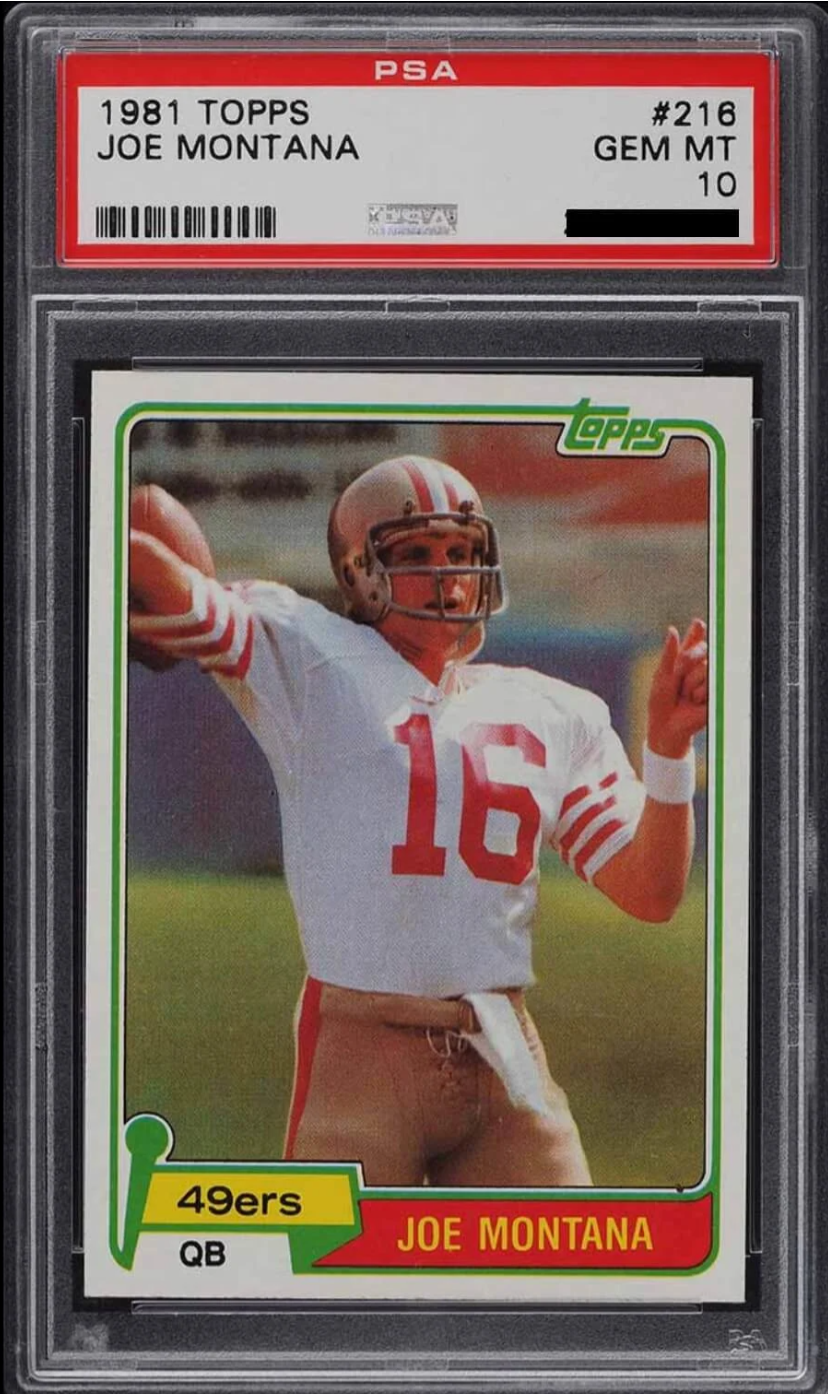Long retired from his legendary career in the NFL, Joe Montana continues to leave an indelible mark not only on the field’s lore but also on the card collecting community. Affectionately known as “Joe Cool,” his remarkable journey, symbolized in his coveted 1981 Topps rookie card, has captured the imagination—and the investment—of fans and collectors alike.
Even if you’ve never held a football, there’s a fair chance you can picture the iconic image: Montana frozen in time, poised and confident, caught mid-throw in his vibrant red-and-gold 49ers jersey. This card is not merely a slice of cardboard with a photograph; it is, for many, a powerful symbol of a transformative era in football. It is the cardboard embodiment of the four Super Bowl championships, the precision passing, and Joe’s characteristic poise under pressure.
To say Montana made a significant mark on football’s landscape feels like an understatement. His cards have emerged as treasures with values soaring high enough to rival the flight paths of his famous passes. Among them, the highly sought-after PSA 10 graded versions have become the crown jewels, with scarcity adding to their allure—only 115 copies possess this pristine status. Recent sales figures have left enthusiasts awestruck; four of these rarities have exchanged hands in just the last quarter, their prices accelerating like Joe once did from a blitz. In fact, they’ve surged nearly 17%, the latest mint condition card fetching a remarkable $48,800. For context, back in 2005, a PSA 10 Joe Montana was acquired for a mere $4,075—which is now a distant memory in the history book of values.
This surge in the card market is not limited to PSA 10s. Delve deeper into the numerical strata, and one still finds robust figures boasting impressive percentages. Take the PSA 9 population, significantly more prolific at over 2,100 copies but nonetheless pulling impressive interest from the market. These cards have experienced their own mini-boom, with the most recent transaction noting an 11% hike over the last three months, culminating in a $2,035 sale. Rewind to 2010, and you’d find the same card valued around $300, a modest exchange back then which has now ballooned to a 578% increase over the past 15 years.
Even the PSA 8 examples, cascading down the tiers in terms of rarity, remain in demand. They paint a picture of accessible memorabilia, with nearly 10,000 extant. Yet they command respect in their pricing, trading hands recently for sums between $290 and $431, with the latest transaction at $329. There may have been a slight dip here, a 5% decline over the past quarter, but the overall trajectory spells out strong demand driven by the nostalgia of an era where Montana’s heroics were staple viewing.
So what drives this consistent demand for a player who hasn’t taken a snap in over a quarter-century? It’s simple: Joe Montana embodies an essence of professional football that marries nostalgia with excellence. While the bronze castings of historical figures age in parks, the cardboard visages of sport’s legends grow richer in both story and monetary value.
Montana’s cards, most notably in top-tier gradings, have become not just collector’s items but investments and historical artifacts. They tell stories of on-field escapades, of glorious tides turned by a steady hand, and the perennial joy of the game rediscovered by each new owner. Whether you’re a decades-long collector or a fresh face in the memorabilia market, Joe Montana’s 1981 Topps rookie card remains a defining piece, a relic of triumphs past that still pulses with the kind of energy only legends exude.
As Montana remains etched in history, so does his collectible market—one that doesn’t only offer an opportunity to own a piece of history but also to partake in the narrative of greatness everlasting. The essence endures, told through rich tales of yore and tangible assets that continue to tantalize beyond that fateful final down he played.

